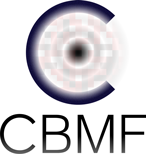The “Promise” of Lattice Light Sheet
- You will get 3D data with good spatial resolution (~300nm) and excellent temporal resolution (e.g. a 100-plane, 2-color Z-stack in ~1 second), for extended durations (hundreds to thousands of volumes), with very low photo-toxicity. In other words: you will be able to image highly dynamic phenomena with subcellular resolution across the entire volume of the cell, in light-sensitive cells.
- You will be able to acquire data on the lattice that you would not be able to acquire any other way.
Sample prep for Lattice Light Sheet microscopy
- The lattice uses water-dipping lenses that image the sample from the top. There is no top coverslip. Samples must be adhered to the coverslip (or otherwise immobilized) with open working space above the sample.
- You will need to use special round 5mm coverslips – Warner #64-0700 (CS-5R):
- The usable area is limited to roughly the center 2×2 mm of the coverslip.
- The sample sits in a media bath with ~8mL of media.
- There is temperature control, but there is no CO2. Use of CO2-independent media is required, such as L-15, or buffer with added HEPES.
The Challenges
- Data analysis will be challenging. You will likely not be able to simply analyze the data manually or by eye. It is expected that you will either be working with the Image and Data Analysis Core (IDAC) or that your lab has experience with computer-assisted image analysis.
- Data handling will be challenging: the raw data for each time-lapse can easily reach 100GB or more, and after post-processing can be 500GB or more. You should familiarize yourself with Harvard Storage policies & quotas and may need to purchase hard drives.
- Data visualization will be challenging. It’s hard to open a full 300GB 5D dataset! Viewing maximum-intensity projections is useful for a rough overview, but cannot show the full information captured by the scope. Programs like Imaris are very helpful, but will require powerful computers with lots of RAM (we have some in the CBMF, as does IDAC), and viewing of full datasets will be slower.
- The microscope is challenging to align and use, and runs on custom non-commercial software. The first many sessions will be “assisted imaging”, where CBMF staff are running the microscope, until we have worked out the details of your experiment with you. Even “independent” users will likely need extensive assistance with day-to-day alignment, acquisition, and data-handling.
Our Requests
- Please do not “pilot” experiments that can be done elsewhere or test sample preparation during your sessions on the lattice: only come with samples that you have already imaged on other microscopes (we can help with that).
- Details of sample preparation should be worked out ahead of your sessions on the lattice. This includes issues such as labeling method/protocol, transfections, cell density and confluence.
- Due to the involved and sample-specific microscope alignment process, we would prefer that you plan on “bursts” of activity on the microscope: plan your experiment and pilot out the details using more simple microscopes, then plan on imaging on the lattice for many days in a row.
- Be patient! This is unrefined, uncommercialized cutting-edge technology. Though we will do our best to make it a smooth and easy process, there will inevitably be unforeseen hiccups and delays.
Frequent Misconceptions
- Spatial resolution on the lattice can be almost as good as (but not better than) a spinning disc confocal with an high NA objective. The detection objective lens has an NA of 1.1, which yields resolution around 300nm.
- While it’s sometimes discussed in the context of super-resolution, imaging on the lattice is (usually) not super-resolution. While technically, the LLS is capable of a super-resolution modality (SIM), it is rarely used. Talk to us if your primary interest is super-resolution (we have multiple other super-resolution microscopes available in our cores that may be preferable).
- Imaging at depths greater than 20-40µm into tissue will likely lead to dramatic degradation of image quality (sample-dependent). This is not the same type of light-sheet that generates movies of whole-embryo development. It excels with thinner samples. It does not have adaptive optics.
Access & Fees
The Lattice Light Sheet is open to all on-quad HMS basic research departments, and currently has no usage fees (but will require a one-time access/training fee). At this time, we are unable to offer access to members of the affiliated hospitals, though we may consider use by affiliates who share a grant with an on-quad basic research lab if there is sufficient time available on the instrument (with priority going to on-quad research labs).
